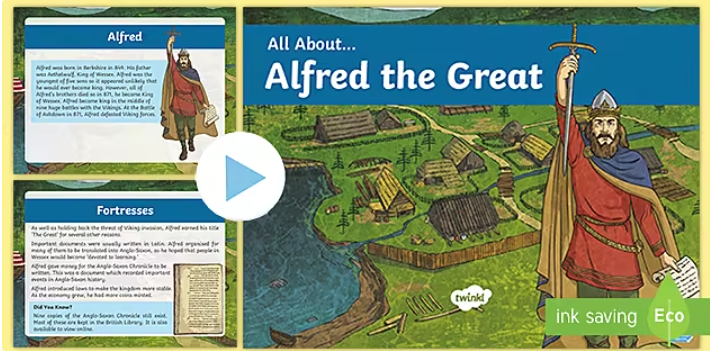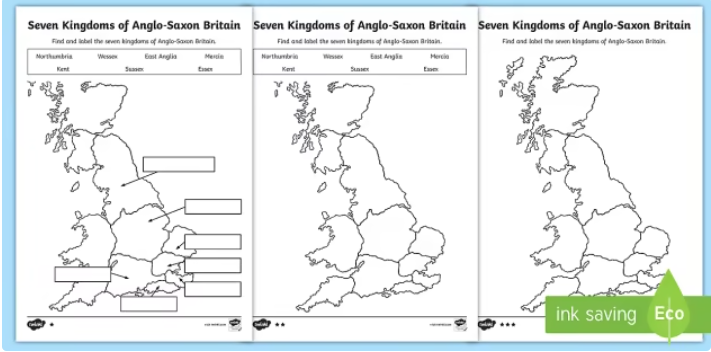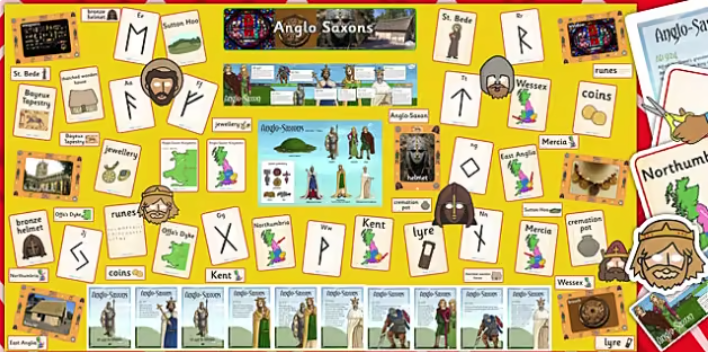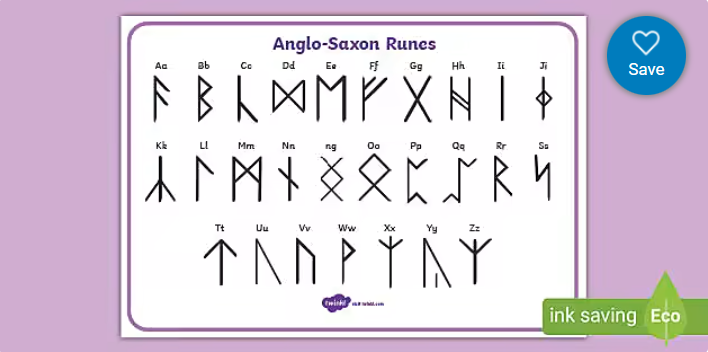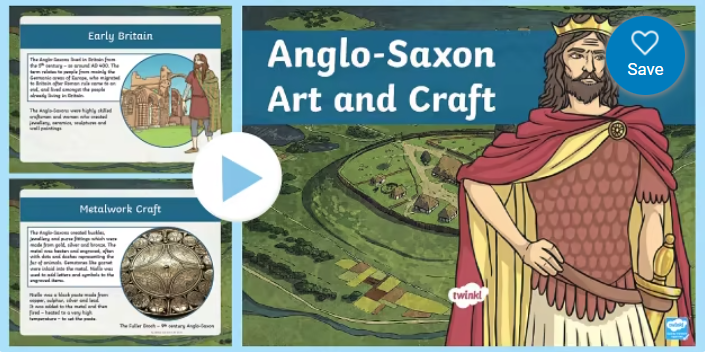

This period began with Aethelwulf becoming King of Wessex. His name translates to ‘Noble Wolf’. His father was Egbert. His father sent him to Kent to expel the Mercian sub-king. Aethelwulf succeeded and became sub-king instead. He succeeded his father in 839. Aethelwulf was highly religious and planned a pilgrimage to Rome in 855. Before he left, he gave a tenth of his personal property and wealth to his subjects and appointed his eldest son Aethelbald to rule over Wessex while he was away. He also asked his son Aethelbert to rule over Kent and the South East. He spent a year in Rome and married Judith, the daughter of Charles the Bald, the West Frankish King, on his way back.
Aethelbald refused to give the throne back to his father, and so they agreed to divide the kingdom into East and West kingdoms. Aethelbald ruled over the West and Aethelwulf ruled over the East until his death in 858. He left Wessex to Æthelbald and Kent to Æthelberht. Æthelbald died two years later, which led to the reunification of the kingdom. Aethelwulf is thought of as one of the most successful West Saxon kings, paving the way for Alfred the Great’s famously successful rule.
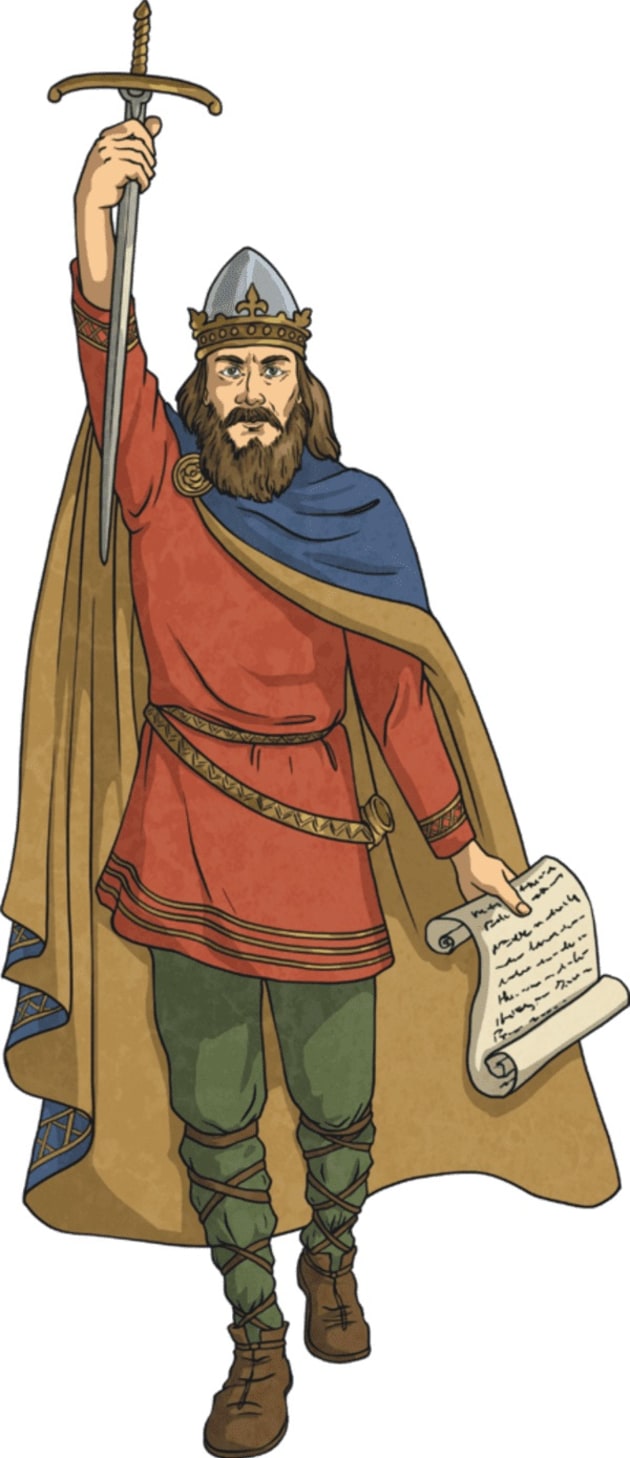 Alfred the Great was the son of Aethelwulf. From about 886 onwards, Alfred called himself King of the Anglo-Saxons. He started the House of Wessex, which was the start of the first unbroken line of kings to rule over the whole of England.
Alfred the Great was the son of Aethelwulf. From about 886 onwards, Alfred called himself King of the Anglo-Saxons. He started the House of Wessex, which was the start of the first unbroken line of kings to rule over the whole of England.
This meant that he initially only ruled over Wessex, one of the seven Anglo-Saxon kingdoms that later made up modern England. However, this eventually expanded, and he established Saxon Christian Rule across England. He is famous for a legend about burnt cakes. When Alfred fled to Somerset, he was taken in by a peasant woman who did not recognise him. She requested that he look after the wheat cakes she had cooking over the fire. However, his mind was occupied trying to solve his kingdom’s problems. The cakes became charred, and he was quite rightfully told off by the woman when she came home!
Alfred spent a lot of time fighting the Vikings during his reign. After winning the battle of Edington, he made an agreement with the Viking invaders to divide England into Anglo-Saxon territory and Viking territory. The Viking portion was called Danelaw and was made up of north England, the north-east Midlands and East Anglia. He was responsible for the Viking leader’s conversion to Christianity.
Alfred the Great is known as an excellent leader. He was well-educated, calm, and rational in his decision-making. Alfred endeavoured to prioritise the livelihoods of his people. He improved the military and the legal system too. ‘The Great’ was added to his name in the 16th century.
Did you know? Egbert (827 – 839 CE) was once believed to be the first king to officially rule over all of Anglo-Saxon England. However, many modern historians now dispute this and assign this achievement to Alfred the Great.
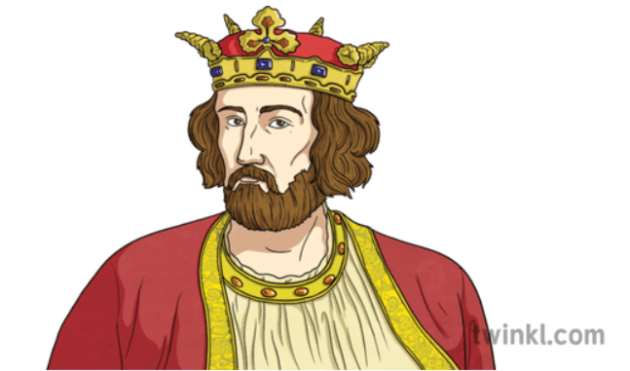 EDWARD (The Elder) (899 – 924 CE)
EDWARD (The Elder) (899 – 924 CE)Alfred the Great’s eldest son was named Edward the Elder. He won a challenge for the throne against his cousin Æthelwold. Æthelwold was the son of Alfred’s elder brother, Æthelred. He became ruler of all of England, besides the areas under Danish rule. He did also manage to take back the Midlands and southeast England from the Danes and unite the kingdoms of Wessex and Mercia after the death of his sister, Aethelflaed, the ruler of Mercia. He was eventually killed in battle.
The next king was Athelstan (or Æthelstan). While his name doesn’t begin with an E, he is the son of Edward the Elder. He fought in a battle against the Scots, Celts, Vikings, and Danes in 937. His victory meant that he now ruled over the whole of Britain.
Edmund became king at 18 following the death of his half-brother Athelstan. He was forced to taken back control of Northern England, which had been taken over by Scandinavian rule following the news of Athelstan’s death. Edmund was murdered during a robbery at the age of 25. He left behind two sons too young to rule, Eadwig and Edgar. Eadred, a relative of Edward the Elder, stepped in to rule for a short period. He died of a stomach-related illness without a wife or any children. By this time, Edmund’s sons were older and both ruled in succession.
Edward the Martyr was the eldest son of Edgar and crowned at age 12. There was support for his even younger half-brother Aethelred to take the throne instead. The clash between the supporters of each young king almost started a civil war. Edward was murdered by Aethelred’s supporters just before he turned 15. He is called ‘The Martyr’ as he is seen as a victim, being a child used as a pawn by his family and their supporters.
The first King in this period was Aethelred II. He became king at ten years old. He was unable to defend against the invasion of the Danes, and instead fled to Normandy in 1013. The King of the Danes, Sweyn Forkbeard, announced himself King of England on Christmas Day of that year. However, he died just over a month later. Aethelred returned and spent the rest of his reign at war with Sweyn’s son, Canute. Aethelred’s son, Edmund II, lost a battle and was forced to share his title of King of England with Canute. Edmund II only retained his rule over Wessex. This treaty determined that whenever one of these two died, the other would take over their kingdom. Edmund died later that year. He was most likely assassinated.
Canute sent most of his Army back to Denmark during his reign, as a gesture of goodwill to his Anglo Saxon subjects. He married Aethelred II’s widow and spilt England into four ‘earldoms’: Mercia, Wessex, Northumbria, and East Anglia. During his reign, he also became King of Denmark in 1018 and King of Norway in 1028. He is possibly best known for the story of ‘Cnut and the waves’, in which he ordered the tide not to come in. It is thought that he knew that the tide would still come in despite his orders, and that this was a demonstration of his limited power as a human being versus the strength of God and nature.
Canute passed away in 1035, leaving his illegitimate son Harold I behind. Harold claimed the throne while his half-brother Harthacanute (with a more legitimate claim to the throne) was away fighting in Denmark. Harold died after three years of rule, coincidentally just before Harthacanute returned with his army of Danes. Harthacanute was so angry at Harold that he had his body dug up, beheaded, and thrown into the Thames. Harthacanute had a short reign and died at the age of 24. He was the last Danish king to rule over England.
Once Harthacanute had died, the House of Wessex reclaimed the throne. Edward the Confessor was very religious, and his primary concern was the rebuilding of Westminster Abbey. The running of the country was left to Earl Godwin and his son, Harold. Their family had ties to Canute (Cnut) the Great. Edward died just after the work on the Abbey had finished. He never had any children, leading to a power struggle for the throne. Harold Godwinson was elected king by a council of nobles and religious leaders called the Witanagemot. William, Duke of Normandy, claimed that the throne was promised to him by Edward many years ago. This led to the famous Battle of Hastings. Harold was killed in battle, and William took the throne as the first Norman king.
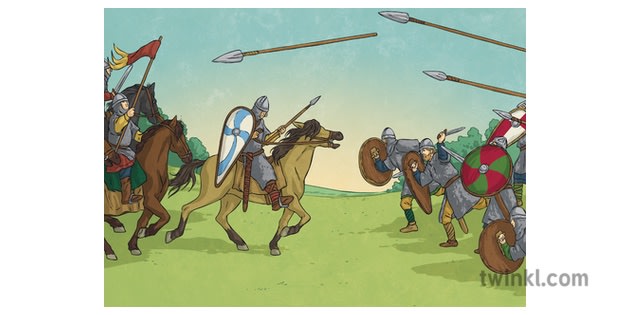
If you’ve enjoyed this list of Anglo Saxon Kings Teaching Wiki, then you might be interested in checking out some of our amazing Anglo Saxon resources! You can find a selection of them below:
KS2 All About Alfred the Great PowerPoint
Seven Kingdoms of Anglo-Saxon Britain Differentiated Worksheets
Ready Made Anglo-Saxons Display Pack
Why not take a look at this fantastic video too?
 Home
Home  Membership
Membership  Customer Support
Customer Support  Create
Create  Blog
Blog 

